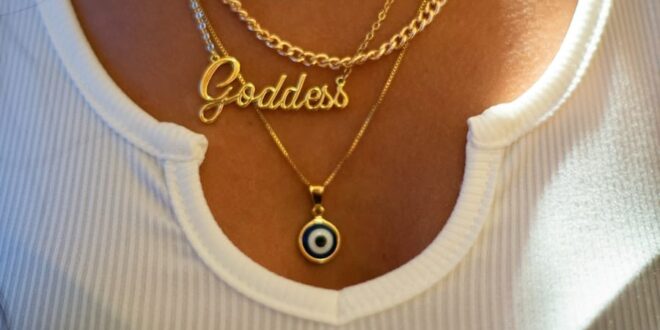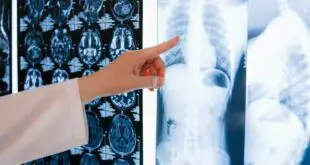How much gold is in the human body? The human body is a fascinating thing full of surprises, and you must be shocked to know that there is gold in your body. This is the right article to help you understand the amount and role of gold in humans.
Humans started their obsession with gold as a sign of wealth and prosperity, but as we advanced in technology, we started seeing more uses.
Gold now has uses in many fields, especially medicine. Let us get into the details and find out more;
How Much Gold Is In the Human Body?
The human body has gold, along with a series of other elements. A person weighing 150 pounds will have approximately 0.2 milligrams of gold in their body.
This will be about 10 Nano-liters of gold in purified form. This would be a cube, with each side being 0.22 mm. It is not so much gold that you could extract even through surgery.
Understanding Body Composition Relative To Gold
The human body comprises many different elements, including the muscles, bones, nerves, organs, and other body parts. More than 96% of the human body comprises oxygen, carbon, hydrogen and nitrogen.
This might not make sense, so let us use an example; people often say that the human body is 60% water. Water molecules have two hydrogen atoms and one oxygen atom. This implies that hydrogen and oxygen comprise most of the human body’s mass.
Oxygen takes up about 43% of the human body weight, while carbon and hydrogen make up 16kg and 7kg, respectively.
Gold is not a major component but is present in some human cells, and its role in the human body is still widely discussed.
We take small amounts of gold into our bodies daily, but it is inert, so it rarely has any effect. A French lady called Diane de Poitiers drank liquid gold to keep her youthful looks, but this might have been the cause of her death.
She consumed so much gold that it was even in her hair, which likely shut her body down. Gold, in small doses, is unreactive, and that’s why it is commonly used in implants.
Top Health Benefits Of Gold
Gold has always been a big part of human history, and most people look at it as a status symbol without understanding its value for their health.
There are small amounts of gold in the human body, and they offer a lot of benefits. Here are some of the best-known ones;
1. Allergy treatment
Many ancient communities believed that gold had curative properties, and they were right. Gold is an ingredient in many ointments that can treat skin diseases like eczema, psoriasis, and skin burns.
Pharmaceuticals use gold compounds and corticosteroids to create ointments that effectively treat local inflammations.
2. Used For Skin Care
If you are into beauty brands and makeup, you must have heard someone mention gold creams. Gold is a common choice for many models as regular use helps reduce skin spots, wrinkles, and lines.
Gold increases the skin’s elasticity to prevent any permanent changes, which makes those who use it look younger. This technique has been used for centuries but has been perfected recently.
3. Stimulating skin cells
Gold helps produce collagen, treat sun damage, and rejuvenate skin cells. A perfect example of this is the use of gold facial masks. There are many gold facial masks that work wonders for their users, the biggest concern being how expensive they are.
Some historians believe that the famous Queen Cleopatra of Egypt practiced gold treatments on her face every night. This included having baths with gold and using pure gold face masks to keep her youthful appearance.
Wearing gold is a sign of status; thus, you will feel better while wearing it, which improves your mental well-being. It will enhance your mood, improve your self-image, and manifest physically in a better appearance.
4. Gold can help with male infertility and Cognitive function
There are traditional Indian medicines that include incinerated gold in the ingredients. These medications are aphrodisiacs that help improve stamina and strength and improve the quality and quantity of semen.
These effects make it an amazing choice for men with an issue siring children. According to research, colloidal gold is a natural stimulant for body cells. This means it boosts how our cells work and can lead to better cognitive function, senses, and movement.
How Is Gold Important In Modern Medicine?
Most people only know about the obvious use of gold alloys in dental restorations, but gold in medicine extends much further than that.
Numerous direct applications for gold in medicine and medical devices exist because of gold’s biocompatibility.
A common use is making wires for pacemakers since gold is inert and won’t trigger any allergic reactions with other system components.
Their easy visibility on X–ray makes doctors use gold-plated stents to help support weak blood vessels.
Gold is highly resistant to bacterial colonization, making it an ideal choice for implants in areas prone to infections, such as ears.
It has a long-standing history of use in making inner ear implants, and it is a valuable part of microsurgery.
Chrysotherapy is a term that refers to using gold compounds in medicine. Historically, gold compounds have played a pivotal role in treating many ailments. Jacques Forestier, in 1929, suggested the use of gold complexes could help treat arthritis.
Research after the Second World War conclusively proved that gold drugs can help arthritis patients, and it is still in use to date. Myocrisi and Auranofrin are the most commonly used gold compounds in modern medicine.
Research in the last few decades has been going into seeing the properties of gold compounds as potential HIV and cancer treatment agents.
National University of Singapore researchers are considering using novel gold complexes for pharmaceutical cancer treatment.
This research would be life-changing since the most common treatments for cancer are platinum-based drugs that have many drawbacks and severe side effects.
There will be clinical trials for gold-based medication soon that will hopefully change the lives of millions of people.
A Short Story of Gold’s Origin and Significance
The Aztecs described the goal as the tears of the sun, and this captured its beauty and how it was created.
Gold was formed billions of years ago from the last explosion of a dying star. Gold is stardust that meteorites scattered across the Earth’s surface.
Humans have prized gold as a symbol of deity, power, and status since they discovered it 5,000 years ago, and its place has not changed. The Egyptians buried their kings with gold ornaments and jewelry.
Throughout history, humans have shown the value of gold, from the Vikings of Scandinavia to old European nations. Its rareness has increased its value over the years, giving it a permanent place at the top of human luxury.
From the splendor of the crown jewels to the simplicity of a wedding ring, gold has held a high level of allure for humans for decades.
Gold allowed humans to trade long before coins and currency came along and has stood the test of time.
Even with the digital world and online banking, gold is still one of the most expensive metals on Earth.
Thanks to its adaptive nature, it has many uses that have made it a sought-after element in nearly every field. We still value gold for its innate beauty when we wear it as jewelry or fabric.
Its unique conductivity allows gold to quickly match our body temperature so that it feels like a part of us.
Gold is easy to work with in creating ornaments; just one ounce can be stretched out into a thin wire 80 kilometers long.
It has recently become a luxury component in food and drinks. Some restaurants will add gold with high carats to their drinks, ice cream, steaks, and other meals. Despite all these, gold’s unique chemical properties propel it to a unique and interesting future.
Gold is soft enough to be cut with a knife, supremely ductile, and unreactive. Its good conductivity makes it one of the best choices to be used in hardware components for modern technology.
Gold makes up the motherboards and components of smartphones, computers, and virtually all electronic devices that aid communication. Gold has inspired, driven, and found a unique place in humanity’s history, heritage, and traditions.
Conclusion
You have all the information to know how much gold is in the human body. There are small amounts that you can’t extract from the human body. Research is still ongoing to understand their exact role in human metabolism.
Gold has made its mark in the beauty world as jewelry and a beauty product. It has many positive effects on the skin, which has made it the go-to choice for beauty companies. They use it to create creams for treating allergic reactions and enhancing skin beauty and tenderness.
 Being Human
Being Human




